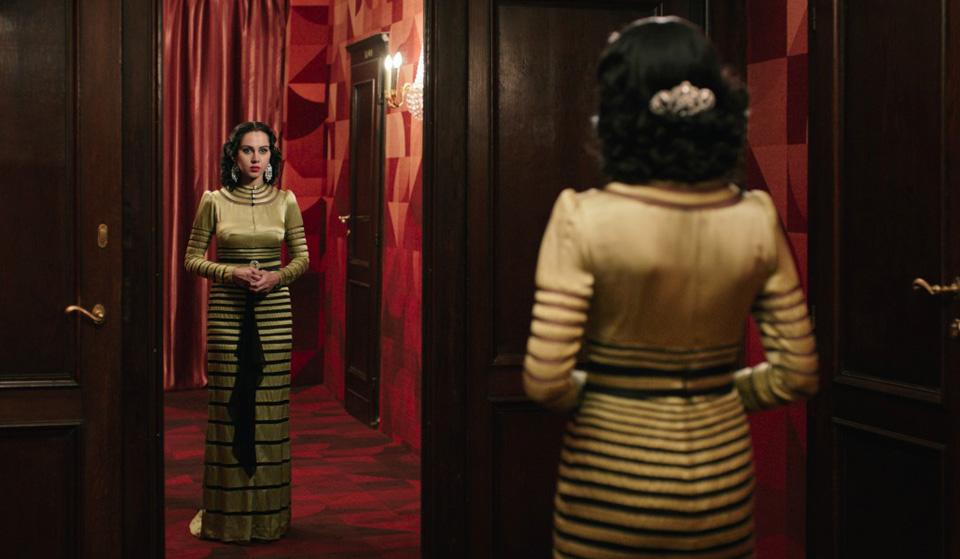
TORONTO—Despite persistent foreign aggression against their country, Iran still has a flourishing cultural environment. Its films are recognized the world over for their deep humanism and artistic accomplishment. When Asghar Farhahi won his second Oscar Award for Best Foreign Language Film this year for his brilliant drama The Salesman (the first was A Separation), he refused to attend because of Trump’s cruelly imposed “Muslim ban.” His powerful statement was read onstage: “I’m sorry I am not with you tonight,” the letter read. “My absence is out of respect for those in my country and those in the six nations who have been disrespected by the inhumane law that bans entry of immigrants to the U.S. Dividing the world into the ‘us’ and ‘the enemy’ categories creates fear,” the letter continued, “a deceitful justification for regression and war. These wars prevent democracy and human rights in countries which themselves have been victims of aggression. Filmmakers can turn their cameras to capture shared human qualities and break stereotypes of various nationalities and religions.”
He went on to say that films can create empathy among people and nations, which is sorely needed in today’s world.
Farhadi, and many other filmmakers were deeply inspired by the late master Iranian filmmaker, Abbas Kiarostami, whose last film, 24 Frames, was featured this year at the Cannes Film Festival. Kiarostami was known to offer simple script ideas to many directors who developed them into stories that contained an amazing wealth of character study and went on to become world famous examples of Iranian cinema art.
The Toronto International Film Festival (TIFF) has always featured the best of Iranian cinema, and filmgoers have been afforded a rare opportunity to gain a deeper understanding of the country and its people—especially since so many of the films are rarely shown or available in the West.
Although Iranian cinema doesn’t avoid serious subjects, it usually avoids sex, violence and offensive language, and often focuses on universal human themes. The simple, basic storyline in Ava is about a young teenager who rebels as her parents question her virginity. The mother takes her to a clinic to test for pregnancy, and the resultant reactions are developed into a deepening plot not much different from what you’ve seen before. But here we are in Iran and the characters are treated with respect. They are soft-spoken, thinking people caught in a dilemma in a country most of the world knows little about, and the story is resolved in a very human manner.
Excited about her first feature narrative, director Sadaf Foroughi was hoping to share the TIFF experience with her two young lead actresses who were also invited but were denied visas to enter Canada. The Canadian Embassy stated it was concerned they might not leave Canada after their stay.
Among the several other Iranian titles shown at TIFF this year, Disappearance most resembles Ava. Here it’s the Iranian version of “the young girl who gets pregnant and goes to the hospital with her boyfriend to get out of the mess before her family finds out.” Another simple story deftly developed into an engrossing study that appears as a documentary unraveling before the viewer’s eyes.
Taking creativity several steps further, director Abed Abest’s Simulation offers a color-coded re-enactment of a crime where all the characters wear solid color blue shoes, solid color t-shirts, etc. The single set includes partial walls with doors swinging into rooms with minimal furniture. One room is the police station, another is the living room where the crime was committed, but it’s all obviously filmed in a studio garage with everything painted in solid colors. The cameras moving around the set are intentionally noticeable to create a sense of intrusion and surveillance.
Reminiscent of Lars von Trier’s painted outlines on the floor in Dogville and Manderlay, Simulation challenges the viewer to determine what is real and not, who is telling the true story, and who is telling the lies to the police. Or are the police lying? No violence, just solid colored wooden prop guns and fake fights, challenging not only reality but the near impossible search for the truth. When it’s all over, you feel like you actually lived through the dramatic events unfolding in real time—the magic of film and great acting and directing.
Then there were two films by Iranian expats. New York-based Iranian artist and filmmaker Shirin Neshat assembled a unique tribute to the legendary Egyptian female singer, Oum Kulthum, who was adored and seen by everyone from high-ranking leaders to people on the street as the ultimate voice of the the Arab world. Looking for Oum Kulthum is a film within a film addressing the theme of “life as an artist-in-exile,” as artist-in-exile Neshat utilizes flashbacks, discontiguous cutting and vivid sets and costumes to attempt to understand the unparalleled life of one of the world’s best loved singers.
Neshat, although Persian, identifies with the Egyptian icon while addressing the role of women in art and the struggles to gain recognition and respect. She plays the director in the film she directs, and quite often has absorbing discussions with the actress playing Kulthum. It’s not coincidental that TIFF has showcased this film: They’ve made it their goal to feature more female directors, this year proclaiming that over one-third of all films shown are directed by women. This extremely creative undertaking, non-linear in design and thematically daring, is captivating from beginning to end.
And although not technically an Iranian film but one directed by an Iranian living in Chile, Alireza Khatami’s Oblivion Verses is a philosophical parable about an old cemetery caretaker attempting to address the ills of the world. In a contemplative magical realist style, Khatami tells the story of a man who is faced with an unidentified young female corpse dropped at the morgue by the secret police, who are carrying on some manner of atrocities in the nearby village. In his own quiet personal way, he is determined to find a proper burial for this symbolic victim of violence. Filled with memorable images, minimal dialogue and a thoughtful script of powerful beauty, the film is a poem to history, memory and humanity. It won the award for Best Screenplay at the Venice Film Festival.












Comments